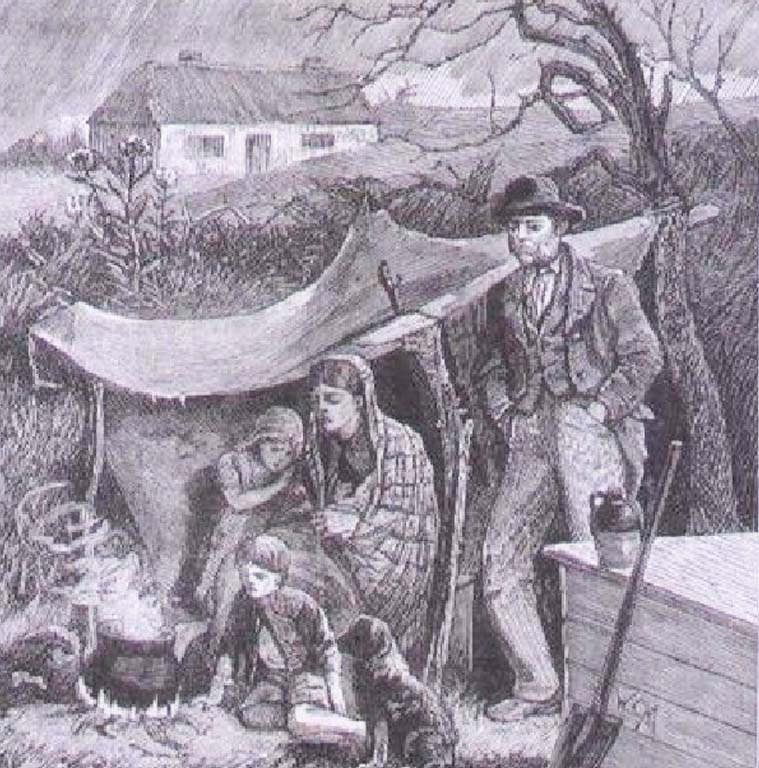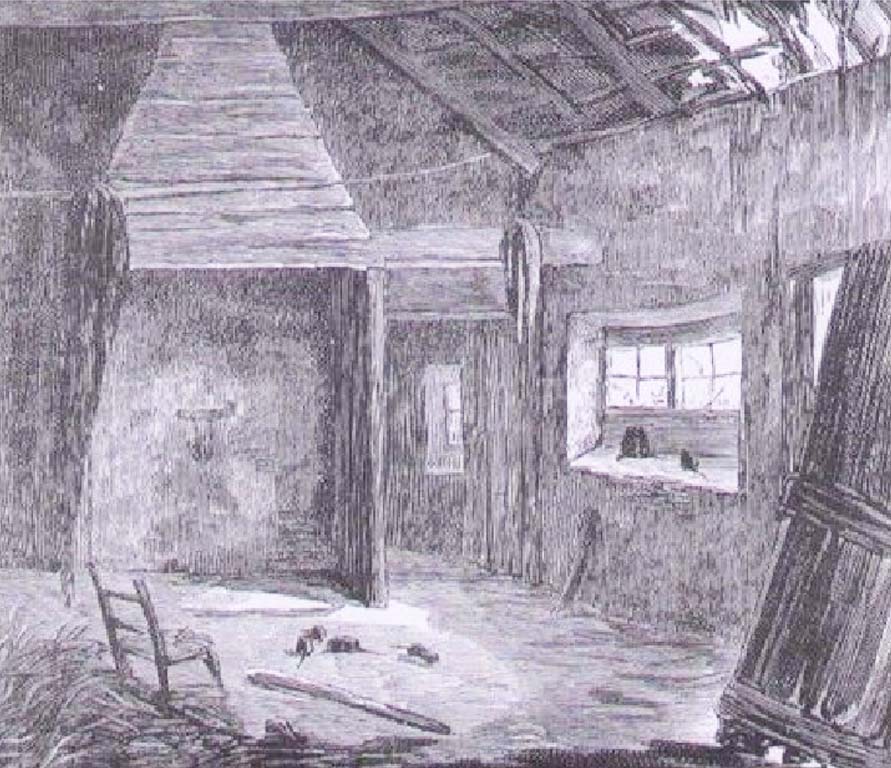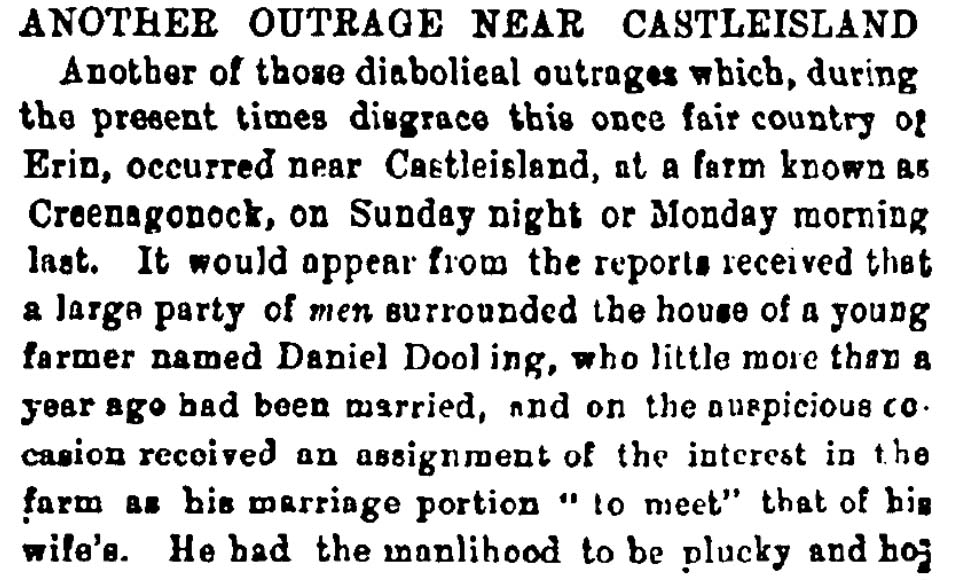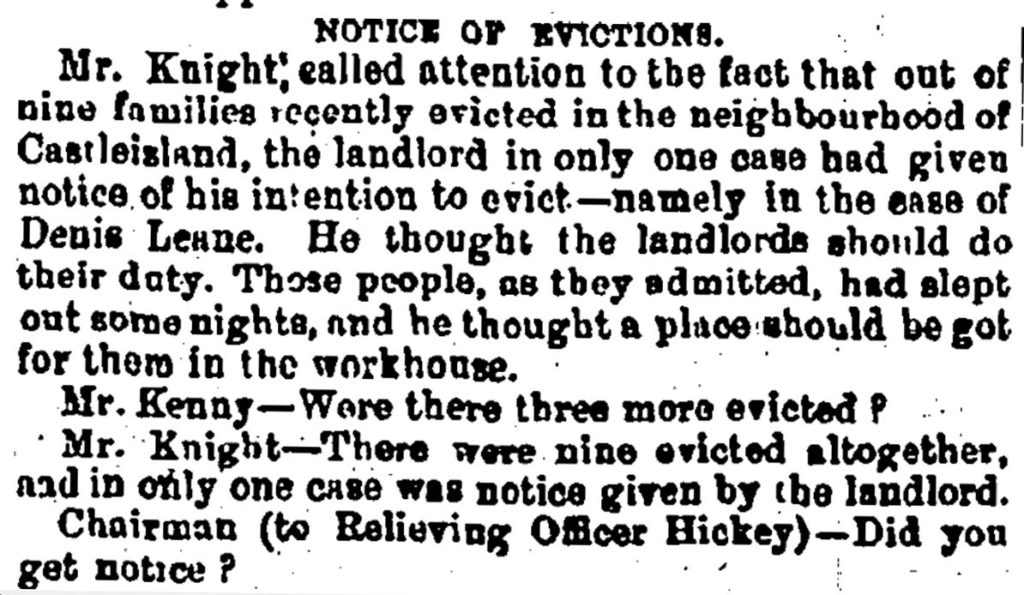A number of charts displaying a variety of subjects form part of the O’Donohoe Collection.1
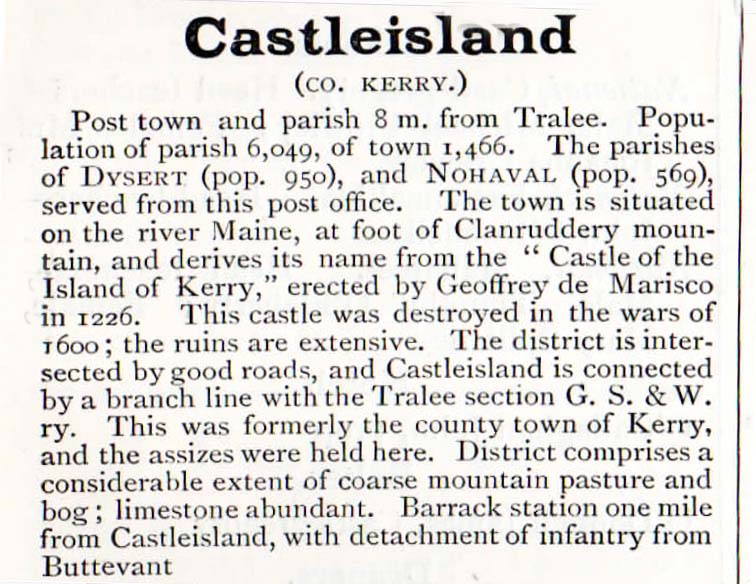
One chart contains a month-by-month summary of events in the Castleisland district in the year 1882 during the turbulent years of the Land War.
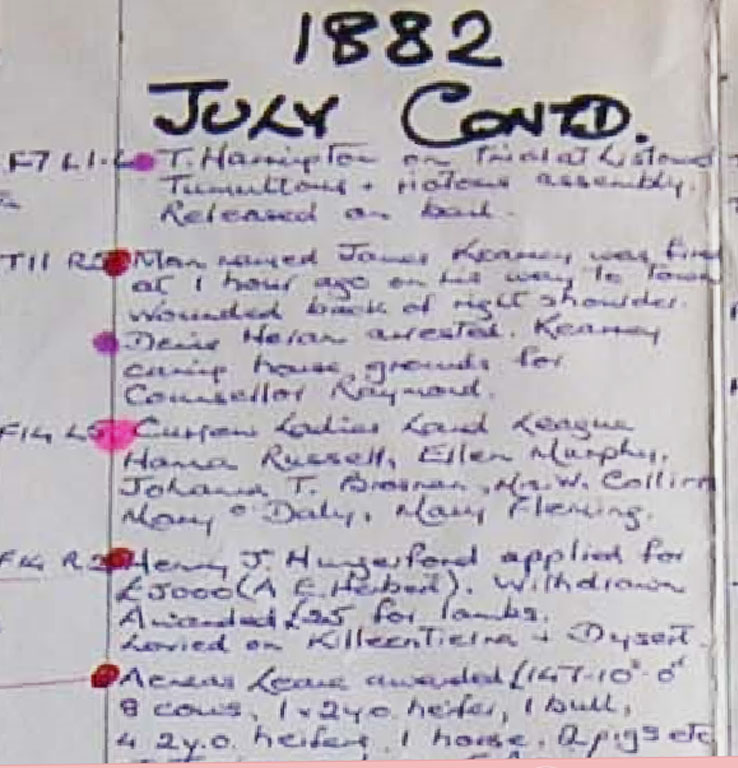
The calendar is a remarkable illustration of the level of unrest in this year and the misery caused by eviction.
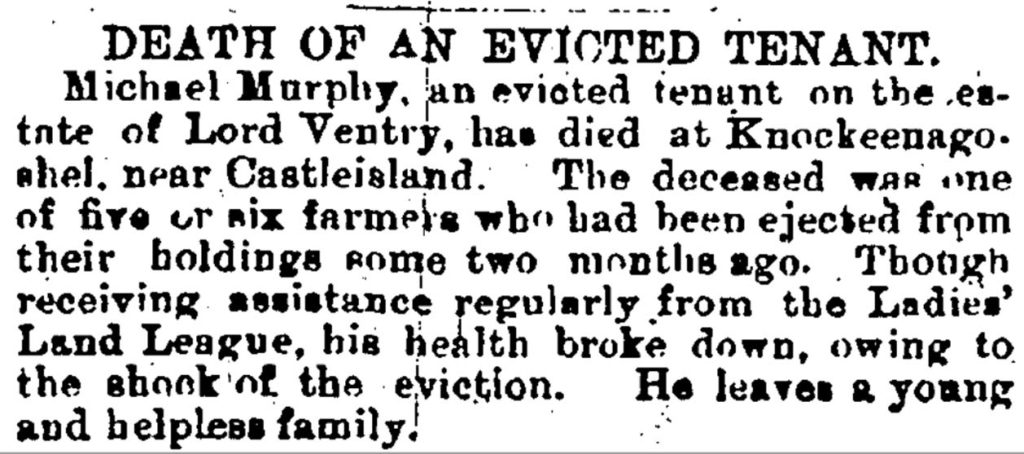
Each event noted in the chart opens up volumes in the political and social history of the time, as the examples below show:
January 9 men arrested re Wm Hartnett Twiss sentenced to 18 months February Letter bomb sent to Chief Secretary for Ireland Shoemaker named Connor from Brosna prosecuted for posting notices signed Capt Moonlight March Farmer named Doolin, Ballyplymouth shot in the thigh for paying his rent A E Herbert shot at Lisheenbawn. A dozen lambs spiked to death April 12 cows, a horse and 2 pigs burned at Knocknagoshel. Paid his rent John Keeffe murdered at Kingwilliamstown May Boyle, gamekeeper, shot Brosnan in the thigh Castleisland celebrates the release of Parnell, Dillon and Kelly June Cornelius Hickey, Crinny, shot in right leg below the knee Mounteagle National School boycotted
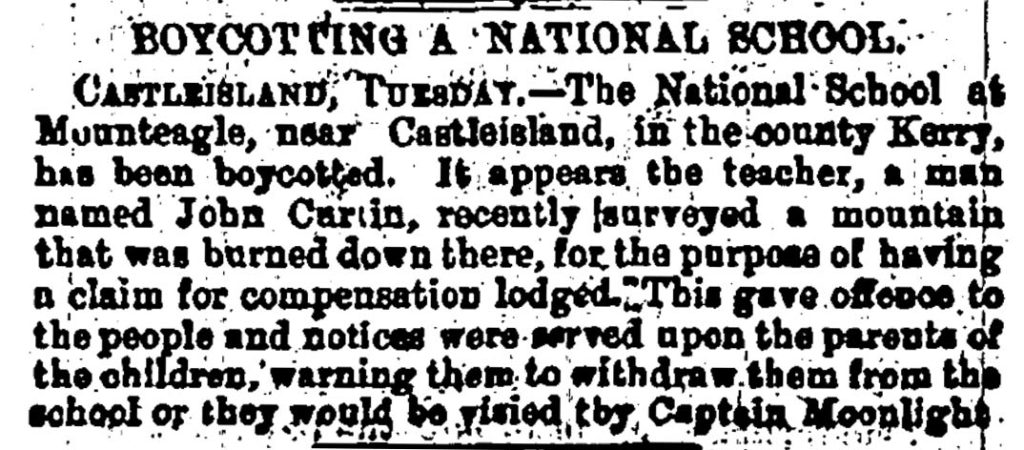
July Cornelius Hickey, leg amputated, died James Kearney fired at on his way to town, wounded back of right shoulder August Robert Finn fined £1 for assault Miss Margaret Kelliher summoned for intimidation of Emergency man at Coole Ladies meeting September Extra police for Kerry - Castleisland 25, Killarney 19, North Kerry 18 Take notice - Anyone who will purchase at Mrs Maybury's auction will, as sure as God is in heaven, meet Leahy's fate October Emergency man named Loughlan who worked for boycotted Paddy Murphy when nobody else would left this district a few days ago Inquest on Thomas Browne, Dromultan November Kerins eviction, Currans 40 raided Maglass House December Poff and Barrett charged Jeremiah Mahony charged with posting notices at Clogher
Plague spot of Kerry
While the Tralee Board of Guardians questioned procedures in eviction, Archdeacon O’Connell described Castleisland as ‘the plague spot of Kerry’ and from the altar implored his parishioners to ‘put down disturbances of all kinds’.
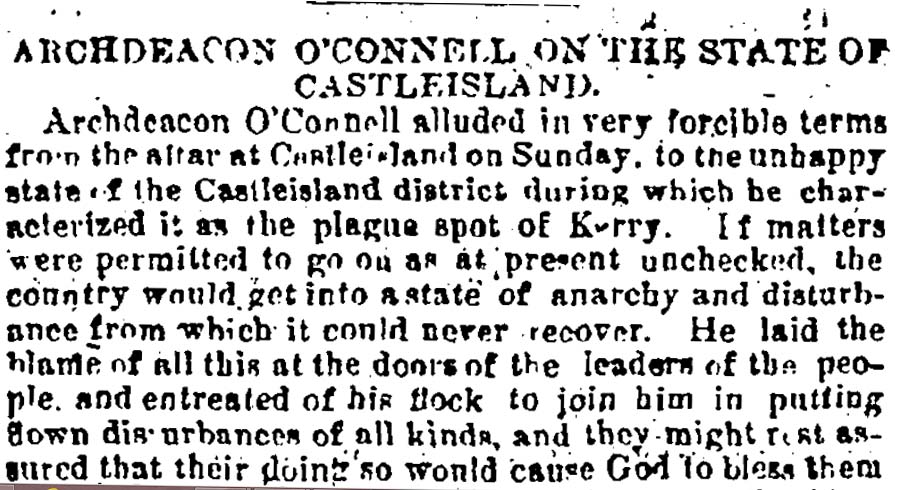
The story of Cornelius Hickey
In his chart, Michael recorded the death of 65-year-old Cornelius Hickey: ‘July 1882 Cornelius Hickey, leg amputated, died’. A closer look reveals that an inquest was held, a report of which takes us into the heart of the sufferings of one family, and throws light on the medical care as it then existed.
The coroner was Captain Spring and the first witness examined was Mary, wife of Cornelius, who described events leading up to the death of her husband:
On the evening of the 8th of June we were going home and at Cragg Cross, two boys came out on the road with revolvers in their hands, and one of them fired three shots at Cornelius, two taking effect, one above and another below his knee. He walked with my help to Horan’s and they carried him home on a car. I brought him to Castleisland next day to David Hickey’s house where he remained until Sunday evening; he was then removed to the hospital, and remained there until yesterday, when he died.
Mrs Hickey was asked if she believed her husband might have lived but for the amputation of his leg and she replied that she did not think that he would have done because the limb was ‘rotten’. Asked if she saw his leg being amputated she again replied no.
Dr Harold, who attended Hickey in his home and at the hospital, described the medical treatment given:
We probed the wound and could not find anything at that time; we then had poultices applied … he was brought to the hospital where I attended him with Dr Nolan … I cut down on the bone and found the bullet and the bone there broken; having extracted the bullet I then went on expectant treatment with a hope that the limb might be saved; from day to day after this, we found the limb getting worse and the deceased getting weaker.
On Wednesday the 5th July Drs Neligan, Nolan, Yourdi and Harold met at the hospital and concluded that amputation was necessary. This was carried out and Hickey died the following day, ‘I think the cause of his death was shock to the nervous system and blood poison, the deceased being an old man’.
A juror asked Dr Nolan if Cornelius Hickey might have lived if the bullets were extracted soon after the shooting: ‘In my opinion he would not and I might say one of the bullets couldn’t be found without amputation as it was embedded in the leg’.2
A verdict was given of ‘death from gunshot wounds by person or persons unknown’.
_________________ 1 IE Mod/14. Charts are of varied content; a number illustrate world events and others contain local material gathered from nineteenth century directories including those of Isaac Slater and Francis Guy. 2 Full report, Kerry Evening Post, 12 July 1882.


